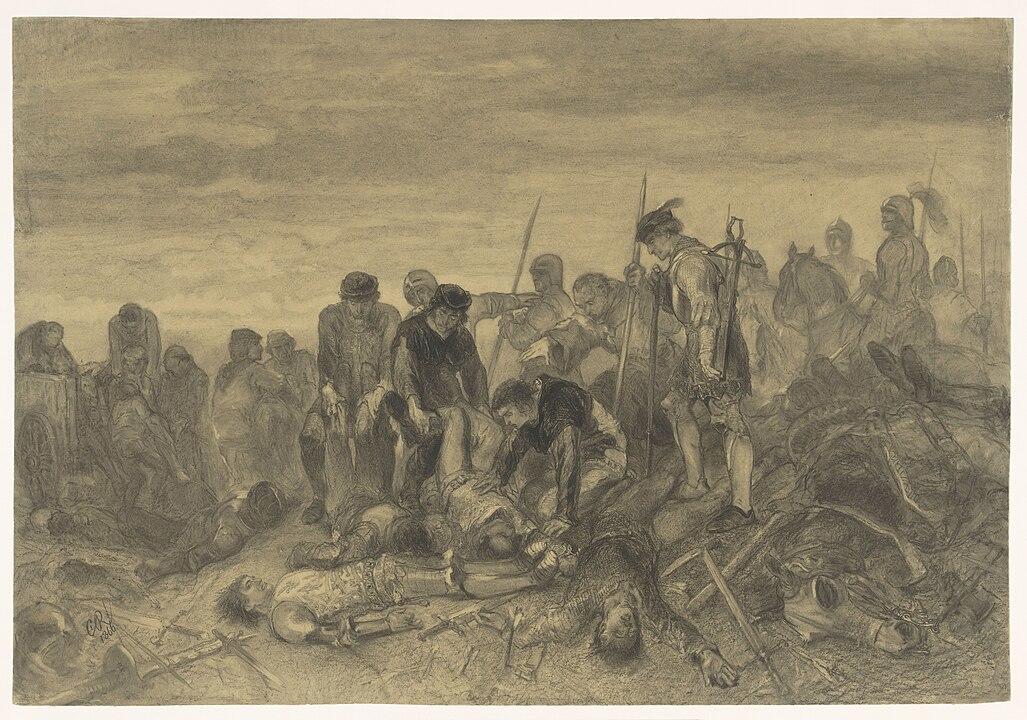Chapters

The downfall of the Yorkist monarchy from 1483 to 1486 was yet another twist and turn in a tumultuous period in English history. It was influenced by several key events and factors. Many people know about the Battle of Bosworth, but not necessarily the events leading up to it. The Wars of the Roses saw power change hands and many bloody wars as the Yorkists and Lancastrians tried to take overall power.
The Yorkist conquest of the Lancastrians in 1461 did not put an end to the Wars of the Roses, which rumbled on until the start of the sixteenth century. Family disloyalty in the form of Richard III's setting aside of his nephews, the young King Edward V and his brother, was part of his downfall. Henry Tudor, a claimant to the throne of Lancastrian descent, defeated Richard III in battle and Richard was killed.
Royal.uk

The Coup D'état by Richard of Gloucester
The coup d'état by Richard of Gloucester, later known as Richard III, occurred in the aftermath of the death of his brother, King Edward IV, in April 1483. At the time, Edward IV's eldest son, also named Edward, became King Edward V, but he was only twelve years old. Richard, as the uncle of the young king and a prominent nobleman, was appointed as Lord Protector to govern in Edward V's stead until he reached maturity.
However, instead of governing as expected, Richard took advantage of the power vacuum and began consolidating his own position. He intercepted Edward V on his way to London for his coronation and brought him to the Tower of London, ostensibly for his protection. Richard then claimed that Edward IV's marriage to Elizabeth Woodville was invalid due to a prior contract, thereby rendering Edward V and his siblings illegitimate and ineligible for the throne.
With Edward V and his younger brother, Richard, not considered for the throne, Richard of Gloucester moved to secure his own claim. He orchestrated a campaign to discredit and eliminate potential rivals, including executing Lord Hastings, a powerful supporter of the Woodville faction. Richard also pressured prominent nobles to swear allegiance to him and spread rumours about the legitimacy of Edward IV's children.
Richard III’s Ascension to King
In June 1483, Richard III was formally declared king by a council of nobles, and he was crowned as King Richard III shortly thereafter. His accession marked the end of the brief claim to the throne of Edward V and the beginning of a tumultuous period in English history.
The fate of Edward V and his brother, Richard, remains a subject of historical debate and speculation. They disappeared from public view shortly after their imprisonment in the Tower of London, leading to suspicions that they were murdered on Richard III's orders. Their mysterious disappearance has fueled centuries of speculation and conspiracy theories, making it one of the most enduring mysteries of the history of England.
Richard III’s Marriage to Anne Neville
Richard III's position as a usurper was further complicated by his marriage to Anne Neville, the widow of Edward of Lancaster, and his perceived involvement in the disappearance of the Princes in the Tower. These factors fueled opposition to his rule and led to factional rivalries within the nobility, with some factions supporting Richard while others sought to undermine him.
Amidst these tensions, Henry Tudor, a distant relative of the Lancastrian dynasty, emerged as a potential challenger to Richard's throne. Henry capitalised on discontent with Richard's rule and garnered support from dissatisfied Yorkist nobles, particularly those who had been alienated by Richard's actions.
In 1483, Richard III faced significant challenges to his position, including the deaths of his wife, Anne Neville, and his only legitimate son and heir, Edward of Middleham.
Richard’s position weakened. Foreign affairs were satisfactory, but finances were in poor order, along with heightened concerns about the succession, especially given the uncertainty surrounding the fate of the Princes in the Tower. It was not known who would be able to succeed him on the throne, a cause of public concern at the time.
Buckingham’s Rebellion
A significant blow to Richard III's reign came with Buckingham's rebellion in 1483, which aimed to overthrow Richard.
It was led by Henry Stafford, the Duke of Buckingham, who had previously been a key supporter of Richard and had played a crucial role in his rise to power.
The rebellion was motivated by several factors, including dissatisfaction with Richard III's rule and his controversial accession to the throne following the disappearance of his nephews, Edward V and Richard, Duke of York, also known as the Princes in the Tower. Buckingham, along with other disaffected nobles, saw an opportunity to challenge Richard's authority and potentially overthrow him.
One of the main objectives of Buckingham's rebellion was to support the claim of Henry Tudor, a Lancastrian exile and distant relative of the former Lancastrian royal family, to the English throne. Henry Tudor had been living in exile in France and had recently landed in Wales with a small force, hoping to gather support for his cause.
The rebellion suffered a major setback when Henry Tudor's forces failed to join forces with Buckingham's army as planned. Additionally, adverse weather conditions hampered their progress, and many potential supporters remained neutral or sided with Richard III.
Buckingham's forces were eventually defeated in a series of skirmishes, and the rebellion collapsed. Buckingham himself was captured, tried for treason, and executed in Salisbury in November 1483. Although the rebellion ultimately failed, it further destabilised Richard's regime and paved the way for Henry Tudor's invasion.
The Emergence of Henry Tudor
In 1485, Henry Tudor landed in Wales with an army and marched against Richard III, culminating in the Battle of Bosworth Field.
Henry Tudor landed in Wales with a small army, mainly consisting of French mercenaries, and marched eastward towards England. Along the way, he gathered support from Welsh and English nobles who were disillusioned with Richard III's regime, including former supporters of the Yorkist cause who had become disenchanted with Richard's rule.
The two opposing forces met at Bosworth Field in Leicestershire, where Henry's forces clashed with Richard III's army. The battle was fierce and closely contested, but ultimately, Richard III was killed in the fighting. With Richard's death, Henry's forces emerged victorious, and he was proclaimed King Henry VII on the battlefield.
Richard's forces were defeated, and Richard himself was killed in the battle, effectively ending the Yorkist monarchy. Henry Tudor was subsequently proclaimed King Henry VII, inaugurating the Tudor dynasty, and solidified his claim to the throne by marrying Elizabeth of York, the daughter of Edward IV and niece of Richard III.








